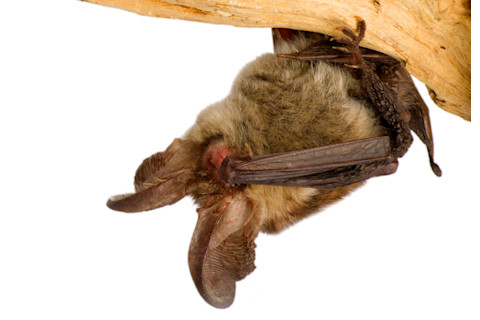
A recent study from two undergraduates at the University of Leicester has proven, once and for all, that Justin Timberlake doesn't know what he's talking about. In a short paper, the students demonstrate that it is physically impossible for a person to cry a river. Even if we made every person on Earth watch Titanic while simultaneously listening to Sarah McLachlan, and then gathered the inevitable flood of tears, all of humanity still wouldn't fill a river. As a benchmark, they used the shortest river on the planet, the Roe River on Montana, which is 61 meters long and sees about 153 million gallons of water pass through a day. They then took the average volume of tears cried in a minute (yes, someone actually measured this) carried through to a whole day, and found that there just aren't enough people on Earth to fill a river with tears of joy or sadness. They do say, however, that if everyone on Earth contributed a modest 55 tears, we could fill an Olympic-sized swimming pool with our sorrows. Someone tell Justin he needs to change the name of his song. While most of us safely assumed crying was an exaggeration, someone finally took the time to give the lighthearted idiom the scientific scrutiny it deserves. And in the spirit of crushing popular sayings with science, and equipping you with pretentious cocktail party knowledge, here's a look at how other turns of phrase stack up to the rigors of science. Better Idiom: "Cry me an Olympic-sized swimming pool."
Blind as a Bat

(Credit: Maksimilian/Shutterstock) As Discover's Christie Wilcox pointed out in March, bats actually see just fine. Don't worry though, even Neil deGrasse Tyson got tripped up by this one. Contrary to the popular assumption, all bats have working eyes, and some can even see better than we can. The stereotype likely arose due to bats nocturnal nature, and the fact that they use echolocation to hunt, an ability that lets them "see" using sound waves. Studies have shown that bats' eyes contain all of the structures necessary for sight, and that the role of opsins — light-sensitive proteins used in vision — has changed over time, indicating that sight is important to them. In addition, a family of bats called the megabats has very well-developed eyes that are likely a result of their habit of hunting at dawn and dusk, when eyesight is of even greater importance. It seems that bats use a combination of both echolocation to navigate and hunt, rendering "blind as a bat" patently false. To be blind as a bat is to actually have pretty decent eyesight. Maybe the term could be repurposed as a compliment? Better Idiom: "You're as blind as a bat, which is to say your eyesight is pretty good, so congratulations on that."
Skin of Your Teeth

(Credit: Lucky Business/Shutterstock) While the phrase denotes a close call — making such a narrow escape that only the "skin" of your teeth separated you from disaster — the saying conjures up a decidedly odd image. As anyone can tell with a quick look, our teeth don't have skin, at least not in the way we think of it. However, there is a connection between skin and teeth, even though it may not align with our own conceptions. Our teeth are coated with enamel, a form of crystalline calcium phosphate that also happens to be the hardest substance in our bodies. This thin layer of minerals acts much like our own skin does, protecting the rest of the tooth from wear and damage. And, it appears that our enamel may have actually evolved from skin, millions of years ago. Looking at the North American gar, as well as extinct species of fish that evolved into land animals, researchers from Uppsala University in Sweden found a substance very similar to enamel coating their scales. They think that this substance went on to become a protective coating for our teeth — the "skin" if you will. Better Idiom: "We made it out by the enamel of our teeth. So it was pretty close, and also very hard."
A Leopard Never Changes Its Spots

(Credit: Blanka Berenkova/Shutterstock) While a leopard may not be able to alter the pattern of its unique markings at will, their spots do undergo noticeable changes at one point in their lives. As a leopard develops, the simple baby spots on its coat morph into the intricate rosettes that distinguish the big cats as adults. A team of researchers at Chung-Hsing University in Taiwan modeled this transformation, based on work by Alan Turing, better known as the "Father of Computing." Turing proposed a mathematical model for how a dye could spread through skin to produce repeating patterns, like those seen on leopards and cheetahs. His model produced startlingly accurate representations of animal coats. The Chung-Hsing researchers took his work a step further and proposed a two-step model that more closely mimicked how leopards developed, and produced leopard-like rosettes with their model. However, there is one caveat: the model as suggested by the researchers has never actually been observed in real cats, meaning that the secret of their spots is still unknown. Nevertheless, it's clear that leopards do change their spots, if only once. Perhaps there's hope for us after all. Better Idiom: "A leopard never changes its spots, except when it's a teenager, and then just once and never again"
Once in a Blue Moon

(Credit: Yuriy Vahlenko/Shutterstock) Although this phrase usually refers to something that's an extremely rare occurrence, the actual event isn't that rare at all. A Blue Moon is commonly held to be a second full moon in a month, which is a product of a 29-day lunar cycle. Eleven of the 12 months on the calendar are, of course, slightly longer. An older definition of the term posits a Blue Moon as the fourth full moon in a season, when most seasons usually only have three. Both events happen roughly every year, and some special years even get two Blue Moons — the last was 1999. While either definition works, there is also a much more literal version of a Blue Moon, although this event is actually pretty rare. Moons that were literally blue have been reported after large volcanic eruptions and forest fires, both events that shot a large amount of soot and particulates into the air. The dusty air refracted light in a different way, giving the moon a bluish tinge. Such "Blue Moons" were reported after the eruption of Krakatoa, Mount St. Helens and after forest fires in Sweden and Canada in the 1950s. Better Idiom: "Once in a blue moon, so not that rarely, except if we're talking about volcanoes."













